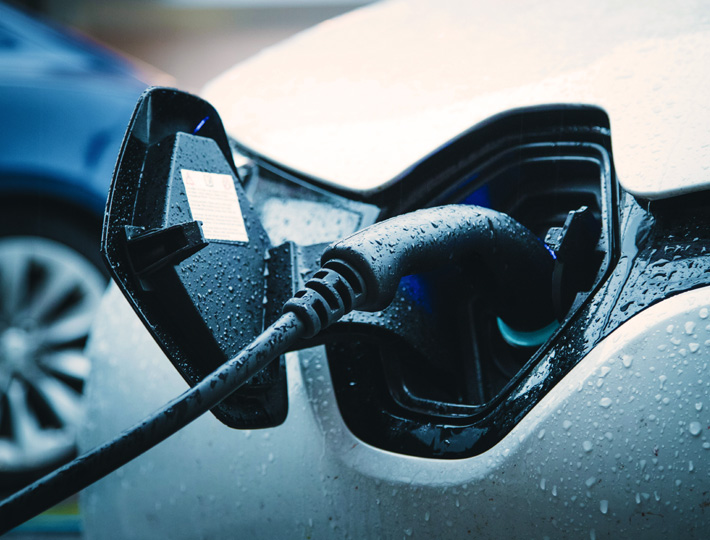S h a r e
Fleet electrification takes a rain check


Posted by
Martin Brown
March 2021
Wow! That was unexpected. I mean, just after Chancellor Rishi Sunak’s Budget had seemingly left business motoring to get on with the electrification of fleets all by itself, the Government fires this broadside. The broadside that changed the parameters to the Plug-in Car Grant for electric vehicles (EVs).
It’s not going to hole the ship, but the changes have certainly taken down some of the rigging that was helping the good ship electrification plump up its sails.
There was inevitably a lot of noise around the decision when it was announced yesterday (18 March 2021). The BVRLA called the decision “poorly timed”, pointing out that confidence in electric vehicles and their running costs remained fragile.
Meanwhile the SMMT called it “the wrong move at the wrong time”.
Certainly, for me, the messaging seemed off cue, dissonant to the ‘go-EV’ tune the government has been playing.
For fleets it may just be enough to derail planned electrification strategies that have been based around executive style cars such as the Tesla Model 3 and the Polestar 2. These will now cost more to lease each month. It’s also a far more persuasive electrification argument to offer employees a swish and technologically accomplished Tesla as a company car rather than a Hyundai Kona Electric, however good the latter may be.
But the bigger challenge is overcoming the perceived issue of higher rentals. While we are happy to demonstrate that whole life costs make EVs better all round, an additional £80 plus a month for a Tesla or a Polestar puts strain on company credulity; I can see businesses pulling up at the greater expense.
There is another consideration that could also weaken fleet resolve to go electric and it’s this: the more expensive EVs tend to travel further on a single charge. The one remaining Kia e-Niro that qualifies for the grant is the lower range 39kWh model, capable of 180 miles; the more expensive 64kWh models, which now find themselves cast beyond the confines of the grant, are capable of 282 miles on the larger battery.
The Tesla Model 3 Long Range, conveniently priced at just short of £50,000 and which used to qualify for the £3000 grant, is capable of 360 miles from its battery.
So the changes to the grant have certainly erected a few more barriers to EV adoption, which are to be regretted. While I don’t believe it will change the general direction of travel for fleets, it’s certainly made the case for electrification more difficult to deliver for fleets, although I suspect those SME business owner-directors will simply shrug and just take the change in their stride.
There is certainly merit in the government’s decision to ‘democratise’ electrification. By changing the rules of engagement, it’s allowing private buyers a better chance to access the grant for longer, especially as cheaper EVs are coming onto the market. After all, fleet and business users still enjoy significant tax savings by choosing electric; I can also see that a taxpayer supported Tesla subsidy doesn’t play well politically.
There is, though, perhaps another political move at play here. It could be a subtle way of the government easing down the cost of EVs. After all, how many models are currently clustered under the old £50,000 cut off at £49,990 or so?
There are 10.
So you can see the new £35,000 becoming the honey pot price point for EVs in the future. A VW ID.3 at over £35,000? It simply won’t sell. But at £34,950 it would be bang on the money.
This made me examine the government’s statement once more, in particular the last two paragraphs which are particularly telling. The statement reads: “More affordable batteries mean that manufacturers can increase the range of the vehicles… As the market develops even further, we expect further price reductions in electric vehicles.”
In other words, the government explicitly expects to see greater range for less money. And as manufacturers still have to meet CAFE CO2 regulations for the UK – a fleet average of 95g/km – or receive punitive fines, the fleet electrification story hasn’t stopped at the change to the grant. It’s just stalled. Temporarily.
A Tesla Model 3 at £34,950 anyone?
You also might like…
If you liked this article then check out our posts about similar topics
2025 Wrapped: My First Year as a Fleet Alliance Appointed Representative
As 2025 draws to a close, it feels like the right time to pause, take stock, and look back on my first year as an Appoin...
FRED 82: Turning a Compliance Challenge into a Fleet Opportunity
FRED 82 may look like just another accounting standard, but for organisations running sizeable vehicle fleets, it repres...
Budget 2025 – the key points for fleets and EV salary sacrifice drivers
The 2025 Budget confirms what many in the fleet and salary sacrifice world have been expecting for some time: as electri...
Best company cars to beat BIK in 2025/2026
Sales of electric cars to fleet and business customers continue to head the new car market in 2025 After four months,...
A Great Place to Work 2025: Fleet Alliance
We’ve done it again! Fleet Alliance is A Great Place to Work - officially We’ve been certified A Great Place to ...
First Drive: The Y Factor – Why Tesla’s Shape Shift is Turning Heads
I didn’t want to love it I did The new-shape Model Y fixes the looks, elevates the drive, and makes a strong case on p...
The top 10 fleet cars from the Munich Motor Show
The Munich Motor Show - which is officially known as IAA Mobility - recently took place It’s a hybrid show demonstrati...
Listening to Our Clients: The Real Demands of Modern Fleet Management
At Fleet Alliance, we don’t believe in making assumptions about what our clients want Instead, we ask them—regularly...
Ready to make the management of your fleet more efficient?
Request a call back
